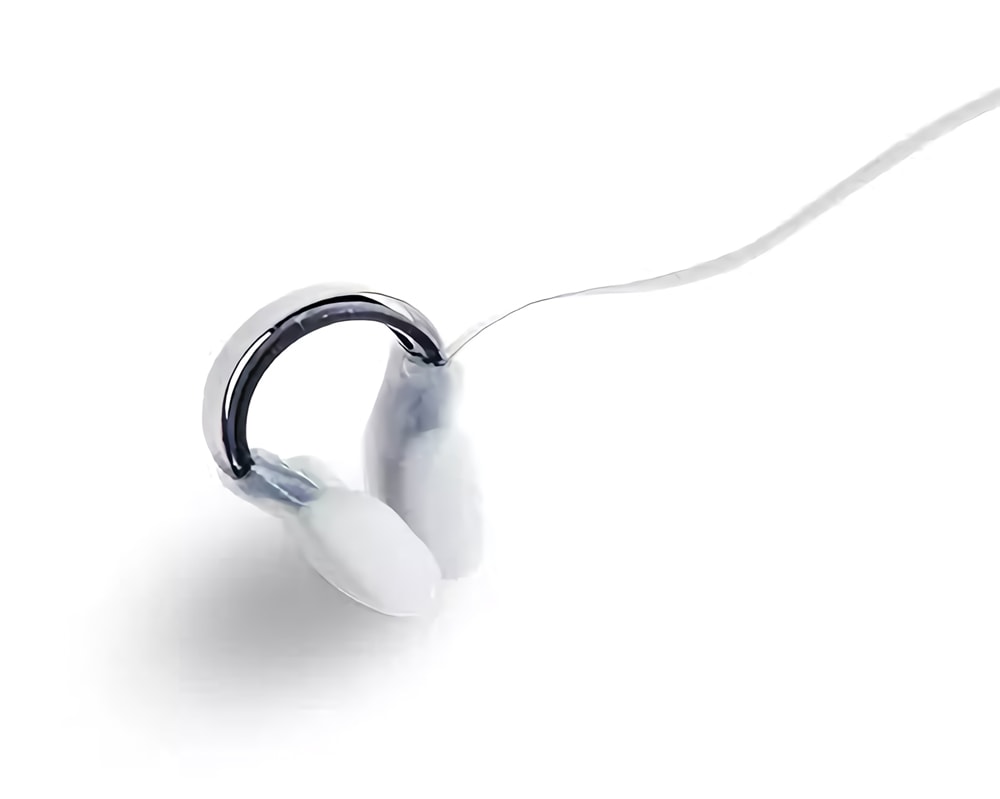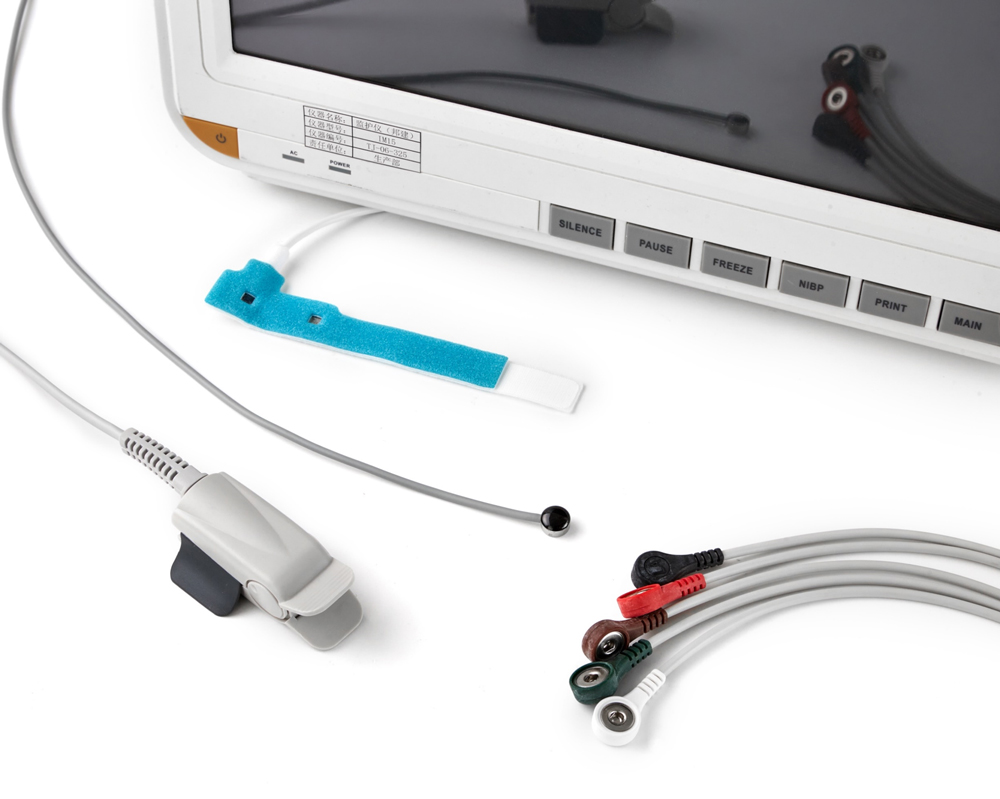
SpO2 sensors: finger, nasal alar
SpO2 sensors measure the oxygen saturation level in a person's blood. They are typically used in pulse oximeters, which non-invasively monitor how effectively oxygen is being carried to the extremities (like fingers and toes) from the heart.
- Non-Invasive: Measures oxygen levels without needles.
- Real-Time Monitoring: Provides continuous oxygen saturation data.
- Quick Assessments: Offers immediate readings for fast decisions.
- Patient Safety: Alerts to hypoxia and respiratory issues.
- Versatile Use: Suitable for various medical settings.
Capnography
Capnography is the monitoring of the concentration or partial pressure of carbon dioxide (CO₂) in respiratory gases. It provides real-time information about a patient's ventilatory status by measuring the amount of CO₂ in exhaled breath, which is crucial for assessing the adequacy of ventilation and guiding respiratory care.
- Real-Time Monitoring: Tracks CO₂ levels continuously.
- Ventilation Assessment: Evaluates respiratory function effectively.
- Early Detection: Identifies respiratory issues promptly.
- Guides Treatment: Assists in ventilator management and adjustments.
- Patient Safety: Enhances monitoring during sedation and anesthesia.


Non-invasive cardiovascular testing
Non-invasive cardiovascular testing evaluates heart function and detects diseases without invasive procedures, utilizing methods like ECGs, echocardiograms, stress tests, and cardiac MRI to assess heart health and blood flow. These tests offer crucial insights into cardiovascular condition without the need for invasive instruments.
- Patient Comfort: No need for invasive procedures.
- Quick Diagnosis: Provides rapid assessment of heart health.
- Risk-Free: Minimizes potential complications and infections.
- Early Detection: Identifies cardiovascular issues early.
- Comprehensive Evaluation: Offers detailed insights into heart function and structure.
Blood pressure cuffs
A blood pressure cuff, or sphygmomanometer, measures blood pressure by wrapping an inflatable cuff around the upper arm or wrist, using a gauge or digital display to measure pressure and a bulb or pump to inflate it. This enables healthcare providers to assess cardiovascular health by determining systolic and diastolic blood pressure readings.
- Routine Monitoring: Allows regular tracking of blood pressure levels.
- Diagnosis: Helps identify hypertension and hypotension.
- Treatment Guidance: Aids in managing cardiovascular conditions.
- Preventive Care: Facilitates early detection of heart-related issues.
- Versatility: Can be used across diverse patient populations.


Probes: ultrasound, temperature, skin surface, esophageal, rectal
A medical probe is a handheld device used for diagnostic or therapeutic procedures, featuring a slender design for insertion into the body. It serves various medical purposes, from imaging and biopsy to visual inspection of internal organs, depending on its specific shape and functionality.
- Diagnostic Precision: Enables targeted examination and imaging.
- Minimally Invasive: Reduces the need for surgical procedures.
- Therapeutic Applications: Facilitates treatments like biopsies and ablations.
- Visual Inspection: Allows direct observation of internal structures.
- Versatility: Adaptable for various medical specialties and procedures.
Electrodes and Sensors: ECG, EEG, EKG
Electrodes and sensors for EKG, EEG, and ECG machines detect and record electrical signals from the body, providing vital data for cardiac and neurological diagnostics. They are placed on the skin or scalp to measure heart or brain activity, facilitating accurate monitoring and analysis.
- Accurate Diagnosis: Provide essential data for cardiac and neurological assessments.
- Monitoring Vital Signs: Enable continuous tracking of heart and brain activity.
- Treatment Guidance: Assist in determining appropriate medical interventions.
- Early Detection: Aid in identifying abnormalities or irregularities promptly.
- Patient Safety: Enhance precision and reliability in medical diagnostics and treatment.

